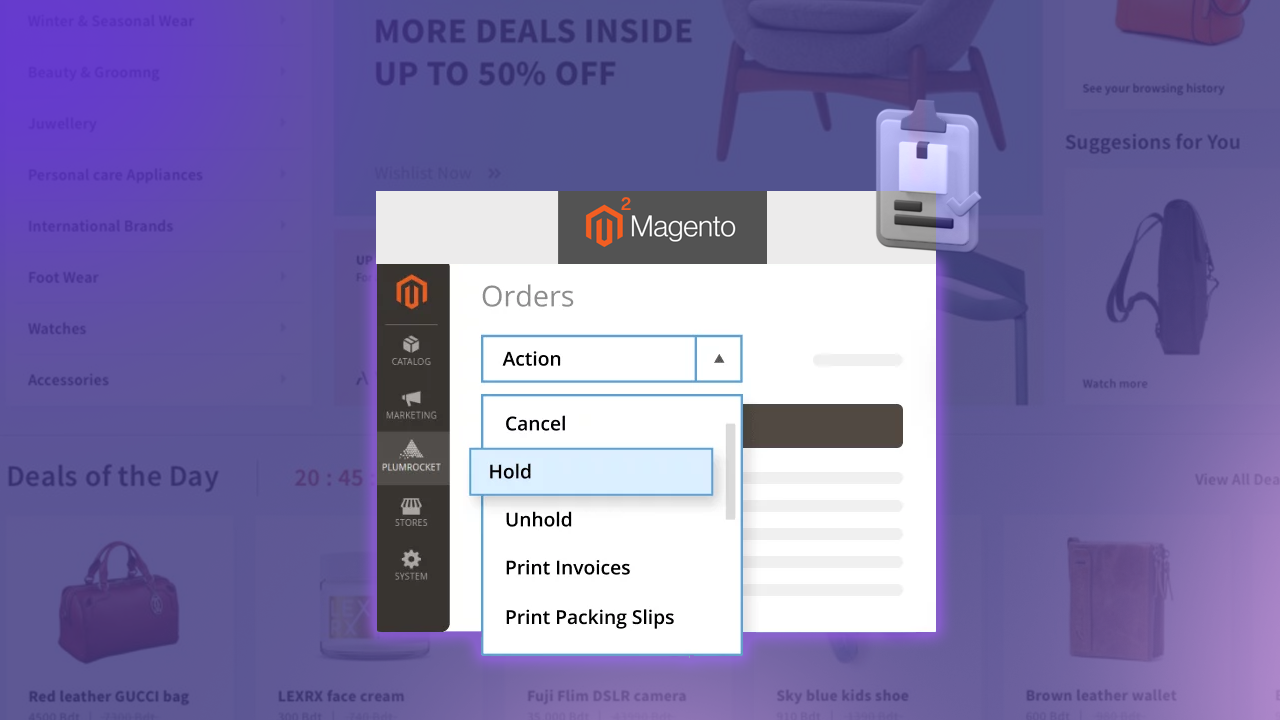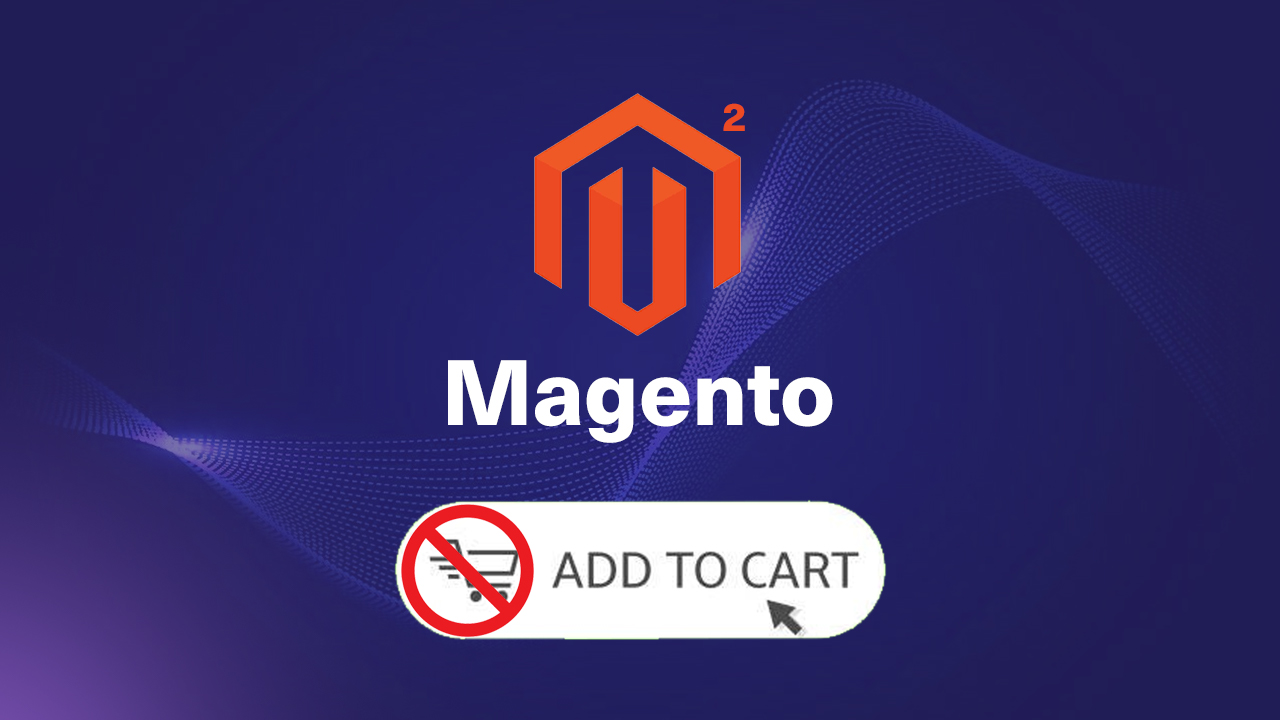Adobe AI offers a range of powerful features designed to enhance ecommerce performance, improve customer experiences, and optimize business operations. Among these feature sets, Live Search and Product Recommendation are the key Adobe AI features for Magento 2. Together, they create a personalized and efficient shopping experience that benefits both the customer and the ecommerce business.
Live Search and Product Recommendations are powered by Adobe Sensei, the core AI and machine learning technology powering Adobe’s intelligent features.
ON THIS PAGE
Understanding Live Search and Product Recommendations
What is Live Search?
Live Search is a search functionality specifically designed for Adobe Commerce. It improves the online shopping experience by providing more relevant and faster search results.
Features of Live Search:
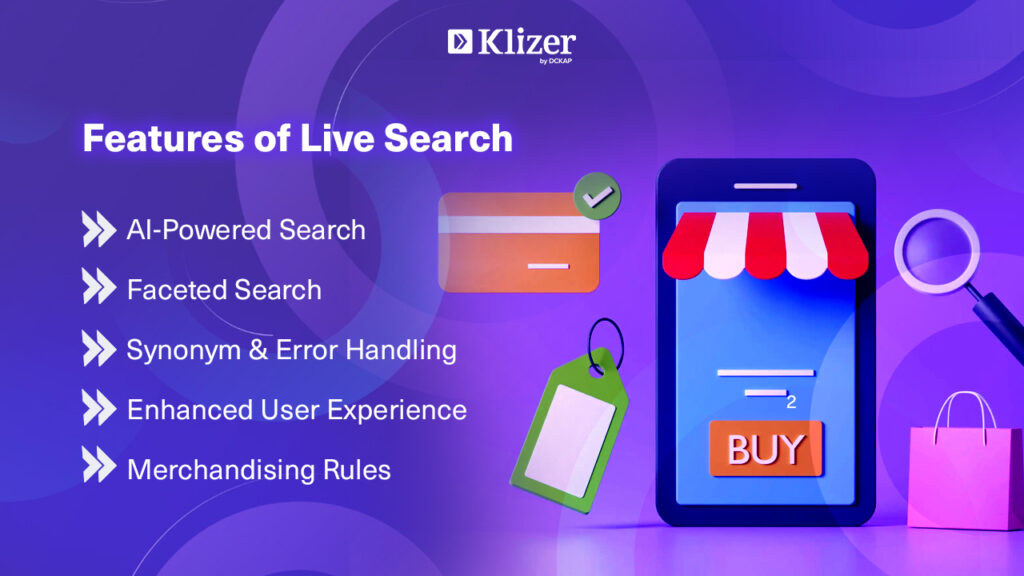
- AI-Powered Search: Leverages Adobe Sensei to analyze the data and deliver more intelligent search results.
- Faceted Search: Offers dynamic faceting and filtering, allowing shoppers to narrow down their search quickly.
- Synonym & Error Handling: Understand search queries better, even if there are spelling mistakes.
- Enhanced User Experience: Shows predictive search suggestions and relevant products as the user enters their query.
- Merchandising Rules: Allows merchants to customize search results based on promotions or other factors to highlight specific products.
Benefits of Live Search:
- Increased Conversion Rates: It helps increase conversion rates by providing a more efficient and relevant search experience for online shoppers.
- Data-Driven Insights: It gives merchants better data insights into what customers are searching for.
What are Product Recommendations?
Adobe Sensei product recommendation empowers businesses using Adobe Commerce to deliver intelligent and personalized product recommendations. This boosts growth and improves the overall customer experience.
Features of Product Recommendation:
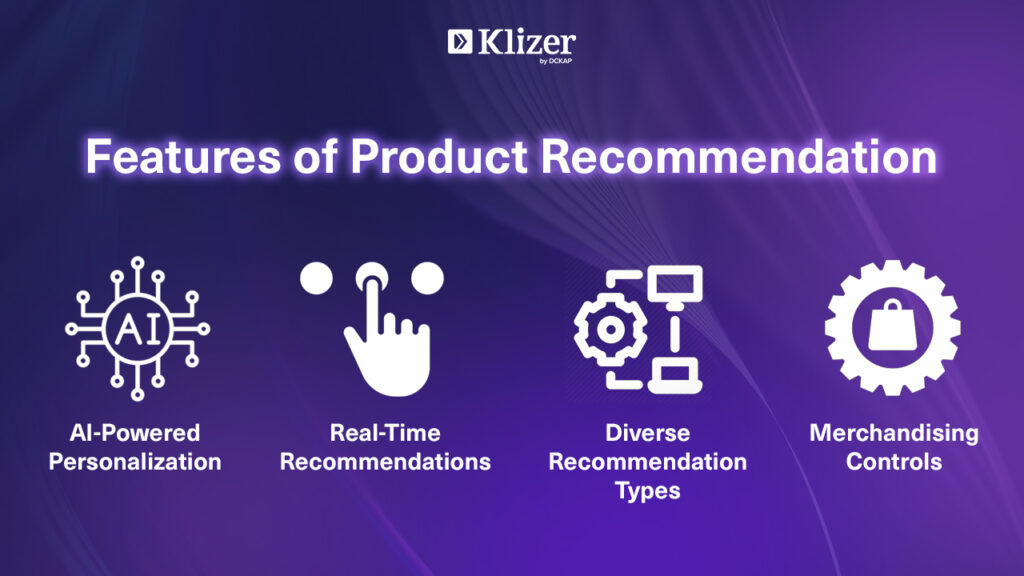
- AI-Powered Personalization: Uses Adobe Sensei’s machine learning to recommend products by analyzing customer browsing behavior, purchase history, preferences, and trends.
- Real-Time Recommendations: Continuously updates recommendations based on the customer’s real-time interactions with the website like browsing, purchase history, and catalog changes.
- Diverse Recommendation Types: Includes various options such as “Customers who bought this also bought,” “Recommended for you,” “Trending products,” “Recently viewed,” and more.
- Merchandising Controls: Allows website admin to customize recommendation rules and highlight certain products.
Benefits of Product Recommendation:
- Increased Conversion Rates: Helps increase conversion rates by showing shoppers highly relevant products.
- Enhanced Customer Engagement: Keeps shoppers engaged and encourages them to explore a wider range of products.
- Improved Customer Experience: Offers a personalized shopping experience, which boosts customer satisfaction and loyalty.
- Data-Driven Insights: Businesses gain valuable insights into customer behavior and preferences, which can inform their marketing and merchandising strategies.
Benefits of Live Search & Product Recommendations Together
Using both Live Search and Product Recommendations together in ecommerce helps businesses improve the shopping experience and drive sales. Here’s how they form a powerful duo:
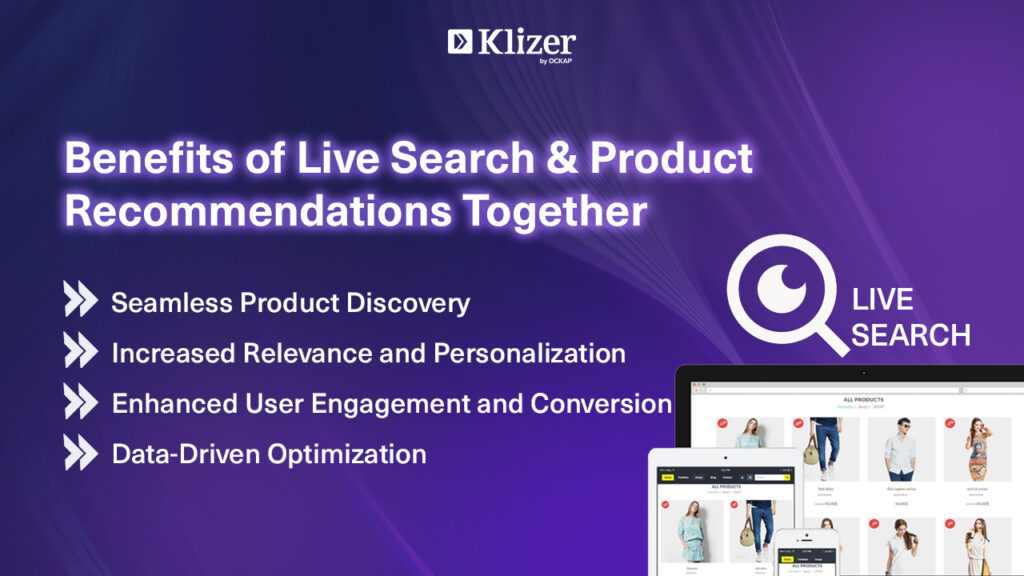
- Seamless Product Discovery: Live search helps customers find what they’re looking for quickly, whereas Product recommendations help them discover even more relevant items.
- Increased Relevance and Personalization: The data gathered from live search queries provides valuable insights into customer intent. This data can be used to refine and personalize product recommendations.
- Enhanced User Engagement and Conversion: The combination of fast, relevant search and personalized recommendations creates a seamless and enjoyable shopping journey, leading to higher conversion rates.
- Data-Driven Optimization: Both Live Search and Product Recommendation systems collect valuable data. By using this data, merchants can identify trending products, optimize search algorithms, and improve marketing strategies.
Step-by-Step Workflow: How Live Search & Product Recommendations Work
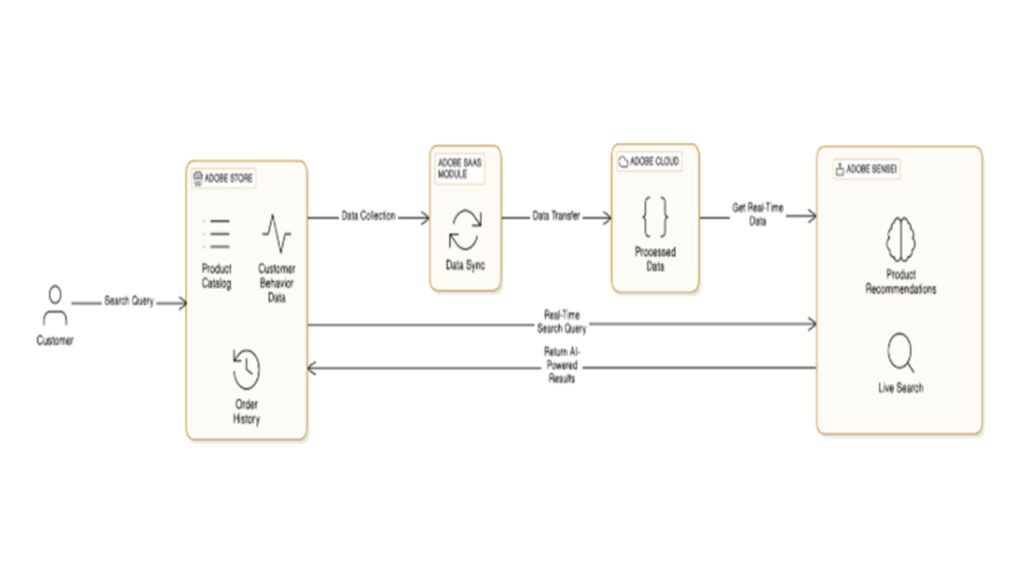
- Adobe Store Data Export:
The Adobe system automatically syncs data from your Adobe Store to Adobe Cloud. This includes product details, inventory, and customer behavior. The sync happens either on a schedule or in real-time, especially when catalog updates occur.
- Adobe Sensei AI Processing:
- Adobe Sensei analyzes synced data to:
- Build optimized search indexes for Live Search.
- Generate personalized recommendations based on user behavior and trends.
- Customer Interaction:
- When a customer visits your Adobe store:
- Live Search sends real-time queries to Adobe Cloud for fast, AI-powered results.
- Product Recommendations suggest personalized items based on their browsing and shopping behavior.
- The result data retrieved from Adobe Cloud is displayed directly within your Adobe Store via API calls.
Challenges and Limitations of Live Search & Product Recommendations
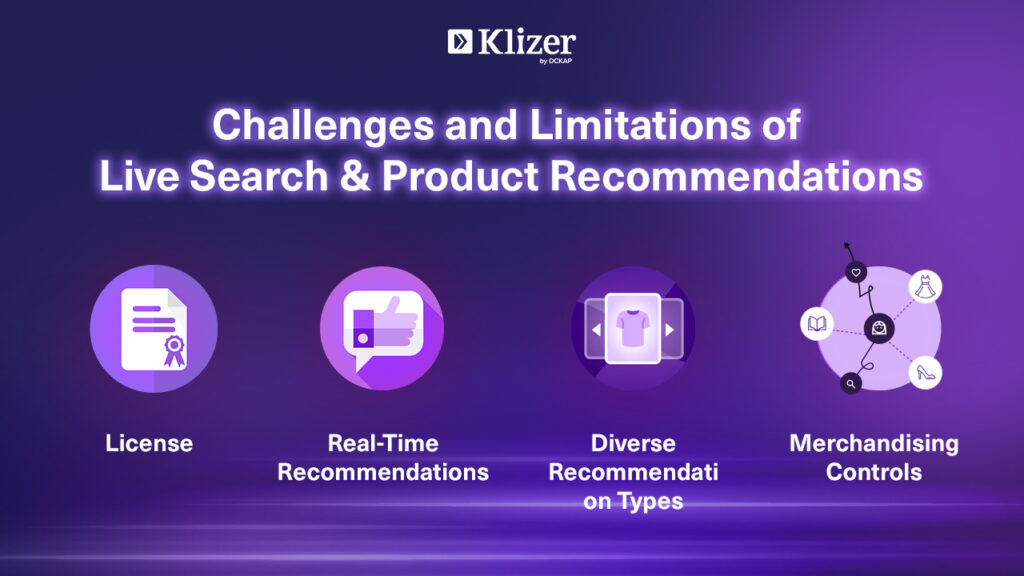
- License: Both Live Search and Product Recommendation require an Adobe Commerce or Cloud license to work.
- Data Dependency:
- AI models need sufficient shopping behavior data for optimal performance.
- Live search relies on indexed data. If product information is incomplete or inaccurate, the search results will suffer.
- New users or those with limited browsing history may receive irrelevant recommendations. Same like.
- New products may also struggle to gain visibility until they’ve accumulated sufficient data.
- Setup & Fine-Tuning Required: Merchants should configure search rules and test recommendations for the best results.
- Data Privacy Concerns:
- Collecting and analyzing user data for personalized recommendations raises privacy concerns.
- Users may be uncomfortable with the amount of data being collected and how it’s being used.
Comparison: Adobe Sensei vs Traditional Search
Adobe Sensei offers significant advantages over traditional search methods by leveraging contextual understanding, content analysis, and predictive capabilities.
Adobe Sensei uses AI to analyze the content, context, and intent behind a search. Here’s how it solves the same problem:
1. Visual Search (Content-Aware Analysis)
- Example: A user uploads a rough sketch of a “sunset over a lake with pine trees” and asks Sensei to find similar images.
- Traditional Search: Requires exact keywords like “sunset,” “lake,” “pine trees.” It misses assets not tagged with all these specific terms.
- Sensei: Analyzes the sketch’s visual elements (colors, shapes, composition) and finds images with similar aesthetics, even if they’re tagged with broader terms like “nature” or “landscape.”
2. Semantic Understanding (Contextual Relevance)
- Example: A user searches for “images that evoke nostalgia.”
- Traditional Search: Shows results tagged specifically with “nostalgia” (like vintage cars or old photographs).
- Sensei: Understands the feeling behind the search and shows images that fit the nostalgic theme (like sepia tones, retro patterns, or family gatherings), even if the exact keyword isn’t used.
3. Predictive Recommendations
- Example: A designer is working on a travel brochure and starts typing “adventure.”
- Traditional Search: Shows images tagged with “adventure.”
- Sensei: Predicts the designer’s needs and suggests not just “adventure” images, but also related items like maps, hiking gear icons, and dynamic typography styles, based on the project context.
Maximizing ROI with Adobe’s Live Search and Product Recommendations
Adobe Sensei’s Live Search and Product Recommendations create a powerful AI-driven ecosystem for Adobe Commerce stores. By enhancing search accuracy, personalizing recommendations, and driving higher engagement, this duo maximizes ROI and keeps customers happy.
One of the best Adobe Solutions experts like Klizer, can help you implement Adobe’s Live Search and Product Recommendations in your ecommerce store. Their advanced Adobe Commerce solutions will help you improve search accuracy, personalize product recommendations, and optimize the overall shopping experience.




